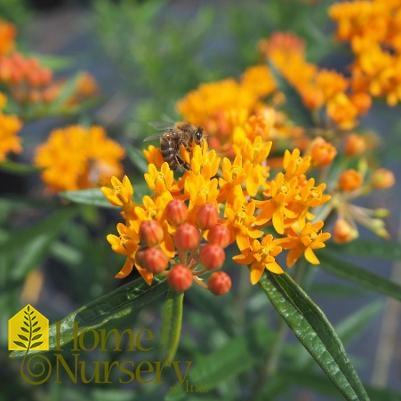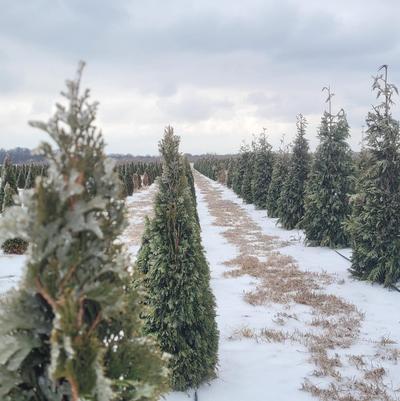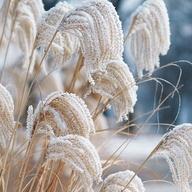Choosing Tough Perennials for Your Garden
What defines a "tough" perennial? A list of Home Nursery perennials that are considered "tough."

Choosing Tough Perennials for Your Garden
From a gardener’s perspective, one important advantage of a perennial plant is that it typically lives for 2 years or more, even though it may die back during the winter months. Some perennials naturally live longer than others and may live many years. If your goal is to include plants in your garden that will be long-lived, hard to kill and thrive in many conditions, then you want a “tough” perennial. Hundreds of plants have been listed as tough by different garden experts across the country with some standards being stricter than others. And plants may be included that are fine for some areas but show unwanted characteristics such as disease or invasiveness in another. So what attributes should define a perennial as tough?
Tough perennials should:
- Withstand weather extremes that are somewhat outside those you would expect in a plant’s recommended zone, including cold snaps, heat waves, and severe storms
- Handle occasional droughts, unless a plant is recommended only for moist or wet sites
- Tolerate sun and soil moisture conditions when they vary from optimal
- Although most plants need some drainage, they should be able to exist in a variety of soil types
- Require little, if any, maintenance including dividing in less than 3-5 years, pruning, trimming, mowing, deadheading, and staking. These are the plants that look good and live well with little fuss, although some gardeners may choose to do some extra maintenance.
- Be able to fend off competition from other plants
- Not be predisposed to certain diseases or pests
- Not be naturally short-lived
Communities with a deer population will be interested in plants that resist browsing by deer, and coastal communities or those that use road salts will be interested in salt-tolerant plants.
Excluded from this list are:
- Ephemeral plants that die back in early summer, even though they could technically be tough
- Plants commonly invasive, even though this might identify them as particularly tough. The degree of difficulty of their control may weigh in on a gardener’s decision to include or exclude them, as some are much easier to eradicate than others.
You’ll notice that many of the plants on this list are native to some regions of the U.S. The toughest plants may be plants that are native to your area since they are well adapted to your local growing conditions. However, even a native needs to be planted in its appropriate growing conditions. The more you can mimic nature when growing natives, the better.
If a plant sounds too good to be true, thriving in many adverse conditions and growing fast while populating difficult sites, you should always look into its invasive potential in your area before planting it in your garden. This is true even of native plants and their varieties. Lily of the Valley (Convallaria majalis), Perennial Bachelor’s Buttons (Centauria spp.), Chameleon Plant (Houttuynia cordata ‘Chameleon’), Bishop’s Weed (Aegopodium podagraria) and Dead Nettles (Lamium spp.) are often on recommended lists because of some favorable attribute but can be particularly invasive.
The following list should represent the toughest of the tough, easy-to-maintain perennials. It includes plants that should grow well in all parts of the country, given they are planted in the correct USDA hardiness zone and in the recommended sun exposure and soil moisture conditions. Also included in the list is the distribution range, which may lead you to plants that do better in the climatic or soil conditions of your area. Several of the genera represented on this list, including Asclepias, Coreopsis, Rudbeckia, Salvia and Sedum, contain other species which could be tough perennials for your garden. There are also many tough ornamental grasses.
Here is a list that Home Nursery recommends:
- Rudbeckia ful var sulliivantii 'Goldsturm'
- Rudbeckia ful var sulliivantii 'Little Goldstar'
- Rudbeckia x 'American Gold Rush'
- Asclepias tuberosa
- Salvia nem 'Violet Profusion'
- Phlox x 'Opening Act Pink-a-Dot'
- Phlox pan Luminary™ 'Ultraviolet'
- Sedum SunSparkler® Dazzleberry
- Sedum x Rock 'N Grow® 'Bundle of Joy'
- Coreopsis x Uptick™ Yellow and Red
- Coreopsis ver 'Zagreb'
- Hosta x 'Francee'
- Hosta x Shadowland® 'Diamond Lake'
- Allium x 'Millenium'
- Allium lus 'Summer Beauty'
- And Many More!
Be Perennially Smart
The advantage of including tough perennials in your garden is easy to see. A long-lived garden is economical, a time-saver and supports environmentally sound practices such as reduced chemical and water use. It also usually includes a considerable number of wildlife-friendly natives. The result is a healthy landscape that looks like it belongs in the makeup of your region.

